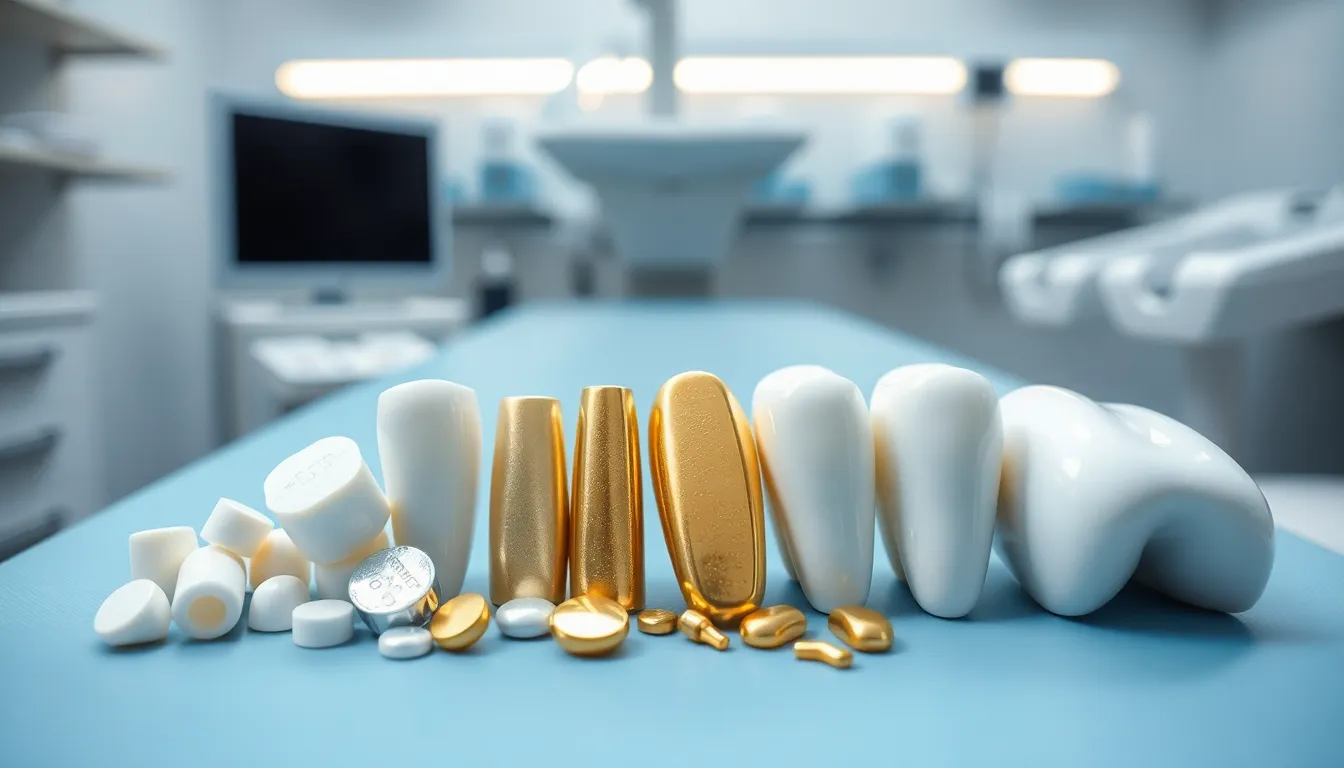Ever wondered what “relleno dental” (dental filling) actually means for your oral health? This common dental procedure might seem routine, but it’s your first line of defense against tooth decay progressing into more serious problems.
When tooth decay creates a cavity, your dentist removes the damaged area and fills the space with special materials to restore the tooth’s function and appearance. Modern dental fillings come in various materials including composite resin, amalgam, gold, and porcelain—each offering different benefits depending on your exact needs and budget constraints.
What Is Dental Filling (Relleno Dental)?
A dental filling, known as “relleno dental” in Spanish, is a restorative procedure that repairs teeth damaged by decay. During this treatment, your dentist removes the decayed portion of your tooth, cleans the affected area, and fills the cavity with a suitable material. The primary purpose of a dental filling is to seal off spaces where bacteria can enter, preventing further decay and restoring the tooth’s integrity.
Dental fillings serve multiple functions beyond just filling holes. They rebuild the structure of damaged teeth, restore proper chewing function, and help maintain your natural smile. The procedure typically takes 30-60 minutes depending on the size and location of the cavity.
Dr. Todd B. Harris explains, “I’ve seen countless patients avoid major dental problems thanks to timely fillings. Just last month, Maria came in with what she thought was a minor toothache. Our examination revealed early decay that, if left untreated, would have eventually reached the nerve. A simple composite filling resolved her pain and protected her tooth from further damage.”
The filling procedure follows these steps:
- Numbing the area with local anesthesia
- Removing the decayed portion of the tooth
- Cleaning the cavity of bacteria and debris
- Placing the filling material
- Shaping and polishing the restoration
Different filling materials offer varying benefits in terms of durability, appearance, and cost. Your dentist considers factors like the extent of repair needed, location of the cavity, and your personal preferences when recommending the most appropriate filling type for your situation.
Types of Dental Fillings Available Today

Dental fillings, known as “relleno dental” in Spanish, come in several varieties to address different needs and preferences. Each type offers unique properties that make them suitable for exact situations, tooth locations, and patient requirements.
Amalgam Fillings
Amalgam fillings combine mercury with metals like silver, tin, zinc, and copper to create a durable restoration option. These silver-colored fillings typically last around 12 years, making them one of the longer-lasting options available. They’re particularly effective for molars and other back teeth where chewing forces are strongest. Amalgam’s cost-effectiveness makes it an accessible choice for many patients, though the metallic appearance limits its use in visible areas of your smile. Dr. Harris notes, “While some patients express concerns about mercury content, extensive research has confirmed amalgam fillings are safe for most people, and they remain one of the most reliable options for high-pressure areas of the mouth.”
Composite Resin Fillings
Composite resin fillings match your natural tooth color, creating a seamless restoration that’s virtually invisible. These fillings bond directly to your tooth structure using a special curing light, providing both aesthetic appeal and structural support. Their natural appearance makes composites ideal for front teeth and visible areas of your smile. Composite fillings typically last 5-10 years—shorter than amalgam—and come at a higher price point. Many patients prefer composite even though the higher cost and shorter lifespan because of the superior aesthetics. One patient shared, “After replacing my old silver fillings with composite, I finally feel confident smiling in photos without worrying about dark spots showing in my teeth.”
Gold Fillings
Gold fillings offer exceptional durability with a lifespan exceeding 15 years in many cases. Made from gold alloys, these fillings provide outstanding strength and biocompatibility. Your body tolerates gold extremely well, making adverse reactions rare. Gold fillings require multiple appointments as they’re typically created as inlays or onlays in a dental laboratory before being cemented into place. The distinct appearance and premium cost place gold fillings in a specialized category, though some patients specifically request them for their longevity and unique aesthetic appeal.
Porcelain Fillings
Porcelain fillings deliver both beauty and strength for comprehensive tooth restoration. These ceramic restorations resist staining better than composite materials while maintaining a natural tooth color. Porcelain typically lasts more than 15 years when properly cared for. Your dentist will create these as indirect restorations (inlays or onlays) in a dental lab before placing them during a second appointment. The premium aesthetics come with a premium price tag—porcelain fillings often cost similar to gold restorations. Patients with visible cavities who desire long-lasting, natural-looking results frequently choose this option even though the higher investment.
The Dental Filling Procedure: What to Expect

A dental filling procedure (relleno dental) restores your decayed tooth to its normal function and shape through a series of precise steps. Understanding what happens during each phase helps alleviate anxiety about the treatment.
Preparation and Numbing
The dental filling process begins with thorough numbing of the affected area to ensure your comfort throughout the procedure. Your dentist first applies a topical anesthetic to the gum tissue surrounding the tooth, followed by an injection of local anesthesia. This completely numbs the tooth and adjacent gum area, making the entire process painless. Many patients report feeling only a slight pressure during the procedure once the anesthesia takes effect. Dr. Todd B. Harris notes, “I’ve found that patients who understand the numbing process experience significantly less anxiety during their appointments.”
Removing Decay and Cleaning
After confirming the area is fully numb, your dentist uses specialized dental tools to remove the decayed portion of your tooth. A dental drill or handpiece with a bur carefully eliminates all damaged tooth structure while preserving as much healthy tooth material as possible. This critical step removes harmful bacteria that could lead to further decay if left untreated. Once all decay is removed, the cavity is thoroughly cleaned to create a pristine environment for the filling material. The dentist then shapes the cleaned cavity to properly accommodate the filling, ensuring optimal retention and strength.
Filling Placement and Finishing
The cleaned and prepared cavity receives the chosen filling material, which may be amalgam, composite resin, gold, or porcelain based on your exact needs. Your dentist carefully places the material into the cavity, ensuring it fills all spaces and bonds properly to your tooth structure. After placement, the filling is meticulously shaped to match your natural bite pattern and tooth contours. The restoration is then polished to create a smooth surface that feels natural when your teeth come together. This finishing process eliminates rough edges and ensures your bite alignment remains comfortable. Patients typically resume normal activities immediately after the procedure, though some temporary sensitivity might occur as the anesthesia wears off.
Benefits of Getting a Dental Filling

Dental fillings stop the progression of tooth decay by removing decayed material and sealing the cavity, preventing bacteria from causing further damage. They effectively create a barrier that keeps food particles from entering the tooth, making daily cleaning easier and halting decay from spreading to healthy parts of your tooth. The restoration process returns your tooth to its natural shape and strength, enabling you to bite and chew normally without experiencing pain or sensitivity.
Modern filling materials offer impressive longevity, with many lasting 15+ years depending on the type chosen and your oral hygiene habits. Tooth-colored options like composite resin or porcelain match your natural teeth shade perfectly, providing aesthetic results that metal amalgam fillings can’t deliver. Certain filling materials even release fluoride back into your tooth, helping to remineralize remaining decay and reduce bacterial growth in the treated area.
Dr. Todd B. Harris notes, “I’ve seen countless patients who avoided major dental procedures simply because they addressed cavities early with fillings. One patient came in with what seemed like a minor cavity, but imaging showed decay approaching the pulp. By placing a filling promptly, we prevented what would have certainly developed into a painful infection requiring root canal therapy.”
Fillings can be used preventatively for teeth with deep grooves or fissures, potentially saving you from needing larger restorations later. The sealed surface reduces discomfort caused by sensitivity to temperature extremes and sweet foods that often accompanies exposed dentin. While fillings aren’t permanent answers and may require replacement over time due to normal wear, they represent a cost-effective and conservative treatment option that’s typically completed in just one dental visit.
How Long Do Dental Fillings Last?

Dental fillings have varying lifespans depending on the material used and your oral care habits. Different filling materials offer distinct advantages in terms of durability, aesthetics, and cost.
Types of Dental Fillings and Their Average Lifespan
| Type of Filling | Material | Average Lifespan | Notes |
|---|---|---|---|
| Temporary Fillings | Various temporary compounds | 6-8 weeks (up to 30 days) | Meant for short-term use only |
| Amalgam Fillings | Silver amalgam | 10-15 years | Durable and commonly used |
| Composite Fillings | Tooth-colored resin | Around 7 years (7-10 years) | Aesthetic but less durable than amalgam |
| Gold Fillings | Gold | 10-30 years (20 years average) | Long-lasting but costly |
| Ceramic Fillings | Porcelain | Up to 15 years | Aesthetic and durable |
| Glass Ionomer | Glass ionomer cement | Less than 5 years (up to 15 years in some cases) | Often used in non-load bearing areas |
Amalgam fillings remain popular for their exceptional durability, particularly in back teeth where strength matters most. Composite resin fillings match your natural tooth color but typically don’t last as long as metal options. Gold fillings represent the gold standard for longevity, sometimes lasting three decades with proper care.
Dr. Todd B. Harris notes, “I’ve seen patients with gold fillings that were placed over 25 years ago and still functioning perfectly. While they’re more expensive initially, their longevity often makes them more economical in the long run.”
Factors Influencing Longevity
Your daily oral hygiene practices significantly impact how long your fillings last. Regular brushing, flossing, and dental checkups help preserve both your natural teeth and restorations.
Diet choices play a crucial role too. Consuming hard candies, ice, or sticky foods can damage or dislodge fillings prematurely. Teeth grinding (bruxism) places additional stress on fillings, potentially shortening their lifespan.
The location of your filling matters as well. Restorations in molars, which handle the majority of chewing forces, typically experience more wear than those in front teeth.
One patient, Maria, shared her experience: “I’ve had the same amalgam fillings in my back teeth for over 12 years with no issues. My dentist always compliments my oral hygiene habits during checkups, which I’m sure has helped them last so long.”
Replacement of Fillings
Dental fillings don’t last forever. Regular dental visits allow your dentist to monitor existing fillings for signs of wear, cracks, or leakage around the edges.
You might notice certain symptoms indicating a filling needs replacement: tooth sensitivity, sharp pain when biting, visible cracks, or a feeling that part of the filling has come loose. Dark lines around the filling edges sometimes signal decay developing underneath.
Early replacement prevents more extensive damage to your tooth structure. Addressing problems promptly often means simpler, less expensive treatment options.
Most dental insurance plans cover filling replacements when medically necessary, though coverage for cosmetic upgrades (like replacing amalgam with composite) varies by provider.
Good oral hygiene and regular dental checkups remain your best strategy for maximizing the lifespan of any dental filling, regardless of the material chosen.
Potential Complications After Getting a Filling

Dental fillings effectively restore teeth damaged by decay, but certain complications can arise following treatment. Understanding these potential issues helps you recognize when to seek professional care.
Tooth Sensitivity
Sensitivity to temperature, pressure, air, or sweet foods commonly occurs after receiving a dental filling. Most patients experience this temporarily as the tooth adjusts to the new restoration. Your sensitivity typically resolves within a few weeks without intervention, but persistent discomfort may indicate an underlying problem requiring attention.
Infection and Decay Under the Filling
Bacteria can infiltrate the space between your tooth and filling if the restoration isn’t properly sealed or bonded. This gap creates an ideal environment for secondary decay beneath the filling, potentially leading to infection. Untreated infections often necessitate more invasive procedures like root canal therapy or extraction. Dr. Harris notes, “I’ve treated many patients who ignored minor discomfort around their fillings, only to discover important decay had developed underneath, requiring extensive treatment that could have been avoided.”
Pain and Toothache
Persistent or throbbing tooth pain after a filling suggests decay may have reached your tooth’s pulp or indicates a defective filling. Pain when biting down frequently points to a filling that’s too high or improperly contoured, creating bite issues and ongoing discomfort. These symptoms require prompt evaluation by your dentist to prevent further complications.
Poor Filling Fit and Physical Problems
Fillings that appear too large or poorly shaped make proper cleaning difficult, increasing your risk of further decay. Improperly prepared fillings can also dislodge or fall out completely, exposing the vulnerable tooth structure to bacteria and causing infection and pain. Regular dental checkups help identify these issues before they progress.
Gum Disease and Inflammation
Bad fillings irritate surrounding gum tissue and contribute to inflammation. Plaque accumulates more easily around ill-fitting fillings, potentially triggering gum disease. Your gums may appear red, swollen, or bleed easily when brushing near problematic fillings.
Allergic Reactions
Some patients experience allergic reactions to filling materials, though this remains relatively uncommon. Symptoms include unexplained rashes, itching, or localized inflammation around the filled tooth. Alternative filling materials provide answers for those with sensitivities.
Structural Weakness and Tooth Loss
Large or failed fillings weaken your tooth structure, increasing the risk of cracking or breakage during normal chewing. Severe decay beneath a compromised filling sometimes leads to tooth loss if the tooth can’t be salvaged through replacement or repair. Early intervention for failing fillings prevents these structural complications.
Cost of Dental Fillings: What to Expect
Dental filling costs vary significantly based on several factors, giving patients multiple options that fit different budgets and needs. Understanding the price range helps you plan financially for this common dental procedure. The national average for dental fillings ranges from $108 to $1,774 per tooth, depending on the materials used and other considerations.
Types of Dental Fillings and Average Costs
| Type of Filling | Average Cost Range (per tooth) |
|---|---|
| Silver Amalgam | $100 to $300 |
| Tooth-Colored Composite | $173 to $439 |
| Gold | $250 to $817 |
| Porcelain Ceramic | $755 to $1,774 |
| Glass Ionomer | $116 to $285 |
Silver amalgam fillings offer the most economical option at $108 to $256 per tooth and can last up to 10 years with proper maintenance. Composite resin fillings provide a natural appearance that blends with your teeth, costing between $173 and $439 on average. Gold fillings run from $250 to $817 but are valued for their exceptional durability in high-pressure areas. Porcelain ceramic fillings represent the premium option at $755 to $1,774, offering both aesthetic appeal and strength. Glass ionomer fillings typically cost $116 to $285 and work well in areas not subject to heavy chewing forces.
Factors Influencing Cost
Multiple teeth requiring fillings naturally increases your total treatment cost. Material selection plays a important role in pricing, with amalgam being the most affordable and porcelain or gold commanding premium prices. Cavity size and complexity affect both the amount of material needed and the time required for placement. Geographic location influences pricing too, with urban dental practices typically charging more than those in rural areas. Sedation options, if chosen instead of standard local anesthesia, can add to your overall expense.
Dr. Todd B. Harris notes, “I recently treated a patient who had postponed getting six small cavities filled due to cost concerns. By the time she came in, two cavities had deepened significantly, requiring more extensive composite fillings at $350 each rather than the $180 she would’ve paid initially. Addressing dental issues promptly often proves more economical in the long run.”
Many dental insurance plans cover 50-80% of filling costs, particularly for amalgam and composite materials. Patients without insurance can explore payment plans, dental discount programs, or treatment at dental schools for reduced rates. Remember that investing in quality dental work now prevents more expensive procedures later, making dental fillings a cost-effective solution for maintaining your oral health.
When to Call Your Dentist After Getting a Filling
Most patients experience mild discomfort after receiving a dental filling (relleno dental), but certain symptoms require immediate professional attention. Understanding these warning signs helps you distinguish between normal healing and potential complications.
Severe Pain or Swelling
Intense pain accompanied by fever or swelling after your filling indicates a possible infection. These symptoms shouldn’t be ignored as they often signal a serious issue requiring urgent dental care. Dr. Todd B. Harris notes, “I’ve seen patients wait too long with post-filling swelling, leading to more extensive treatments that could have been avoided with prompt attention.”
Persistent Sensitivity
Temporary sensitivity to temperature changes is normal after getting a filling. But, discomfort lasting more than a month isn’t typical and suggests potential problems with your filling’s fit or an underlying infection. Many patients describe this as a sharp sensation when biting down or exposure to hot and cold beverages.
Difficulty Eating or Worsening Pain
Sharp, increasing pain or trouble eating after your filling procedure warrants immediate dental evaluation. Early diagnosis prevents additional damage to the affected tooth and surrounding structures. Your bite should feel comfortable within a few days after treatment.
Signs of Infection or Allergic Reaction
Contact your dentist promptly if you notice:
- Prolonged redness around the filled tooth
- Swelling near the filling or in your face
- Discharge of fluid from the area
- Unpleasant odor from the tooth
- General feeling of illness following the procedure
“One patient ignored swelling for nearly a week after her filling, assuming it was normal,” recalls Dr. Harris. “By the time she came in, the infection had spread significantly, requiring a root canal that could have been prevented with earlier intervention.”
Managing Minor Discomfort at Home
For typical mild sensitivity while healing:
- Stick to lukewarm foods and beverages
- Choose soft foods that don’t require excessive chewing
- Use toothpaste specifically formulated for sensitive teeth
- Rinse with warm salt water several times daily to reduce inflammation
If your symptoms worsen even though these measures, don’t hesitate to call your dental office. Early intervention ensures your filling remains functional and your tooth stays healthy.
Conclusion
Dental fillings are a cornerstone of preventive dental care that protect your teeth from further decay while restoring function and appearance. With various materials available from affordable amalgam to premium porcelain you can choose what best fits your needs and budget.
Remember that timely treatment saves you money and prevents more invasive procedures down the road. Most fillings last 5-15 years depending on material and your oral care routine.
While mild discomfort after placement is normal contact your dentist if you experience severe pain persistent sensitivity or swelling. Regular checkups will help monitor your fillings’ condition ensuring they continue protecting your smile for years to come.
Your investment in dental fillings today is an investment in your long-term oral health.
Frequently Asked Questions
What is a dental filling?
A dental filling is a restorative material used to repair teeth damaged by decay. The procedure involves removing the decayed portion of the tooth, cleaning the cavity, and filling the space with materials like composite resin, amalgam, gold, or porcelain. Fillings help prevent further decay and restore the tooth’s function and shape.
How long do dental fillings last?
Dental filling lifespan varies by material: temporary fillings last 6-8 weeks, composite resin 5-10 years, amalgam 10-15 years, and gold or porcelain can last 15-30 years. Longevity depends on oral hygiene practices, dietary habits, and the location of the filling in the mouth. Regular dental checkups help monitor fillings for necessary replacement.
What types of dental filling materials are available?
Four main types of dental fillings are available: amalgam (silver-colored, durable, cost-effective), composite resin (tooth-colored, aesthetically pleasing), gold (extremely durable, biocompatible), and porcelain (stain-resistant, long-lasting). Each material has different advantages regarding appearance, durability, and cost, with selection depending on cavity size, location, and personal preference.
What happens during a dental filling procedure?
During a dental filling procedure, your dentist will first numb the area with local anesthesia. They’ll then remove the decayed portion of your tooth, clean the cavity thoroughly, place the filling material, shape it to match your bite, and polish it for a smooth finish. The entire process usually takes 30-60 minutes and can typically be completed in one visit.
How much do dental fillings cost?
Dental filling costs vary widely, ranging from $108 to $1,774 per tooth nationally. Silver amalgam fillings are most affordable, while porcelain ceramics are most expensive. Costs depend on filling material, cavity size, tooth location, and geographic region. Dental insurance typically covers a portion of the expense, making preventive treatment more economical than delayed care.
When should I call my dentist after getting a filling?
Call your dentist if you experience severe pain lasting more than 24 hours, significant swelling, persistent sensitivity to temperature after several days, difficulty chewing, visible cracks in the filling, or signs of infection like fever or discharge. While mild discomfort is normal, these symptoms may indicate complications requiring professional attention.
Can I eat normally after getting a dental filling?
You can resume eating once the anesthesia wears off completely, typically 1-3 hours after the procedure. For the first 24 hours, avoid extremely hot or cold foods and beverages that might trigger sensitivity. With tooth-colored fillings, it’s best to avoid staining foods and drinks like coffee, tea, and red wine for the first 48 hours while the material fully sets.
What are the benefits of getting dental fillings?
Dental fillings stop decay progression, preventing more serious dental problems. They restore tooth shape and function, allowing normal chewing without pain. Modern fillings can match your natural tooth color and last over 15 years with proper care. Some materials even release fluoride to help strengthen surrounding tooth structure. Getting fillings early is more cost-effective than waiting for decay to worsen.







